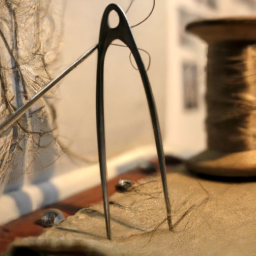
 sewing machine“>
sewing machine“>
Sewing, an art form deeply intertwined with human history, has evolved significantly over the years. From ancient needle and thread techniques to sophisticated modern machines, the way we sew has transformed our lives and shaped the fashion industry. Let’s explore the fascinating journey of sewing through time.
The Origins of Sewing
Sewing finds its roots in the Paleolithic era, where our ancestors utilized animal bones or horns as needles and tendons or animal fibers as threads. This rudimentary technique was used to create clothing, shelter, and even for survival. Over time, human civilizations developed more advanced tools, like bronze needles and flax threads, introducing more refined sewing techniques.
Industrial Revolution and Beyond
The Industrial Revolution in the 18th century revolutionized the textile industry and sewing itself. In 1790, Thomas Saint invented the first-ever sewing machine, which marked a significant milestone. However, it was only during the mid-19th century that sewing machines gained popularity and made mass production of clothing possible.
“The invention of the sewing machine has had a tremendous impact on the fashion industry. It dramatically increased productivity and made clothing more accessible to people across various social classes.” - Fashion Historian, Sarah Johnson.
Sewing machines evolved rapidly, incorporating new functionalities and becoming electric-powered during the early 20th century. This advancement simplified the stitching process and further sped up production.
The Digital Era and Automation
As technology advanced, sewing machines embraced automation and computerization. Computer Numerical Control (CNC) machines revolutionized the industry, enabling precise and intricate stitching patterns. Today, computerized sewing machines offer a range of features like automatic threading, programmable stitches, and even embroidery options.

Sewing has expanded beyond garment production. Many people now enjoy sewing as a hobby, creating unique crafts and personalized items. The accessibility of sewing machines and online tutorials has made it easier than ever for individuals to learn and express their creativity through sewing.
Sewing as a Sustainable Practice
In recent years, sewing has experienced a resurgence due to its sustainable aspects. The fast-fashion industry’s environmental impact has led many to seek alternative options, such as upcycling and repairing old garments. Sewing allows individuals to extend the lifespan of their clothing, reducing waste and embracing a more eco-friendly lifestyle.
Sewing has come a long way since its humble beginnings. From basic hand-sewing techniques to advanced computerized machines, the art of sewing continues to evolve. Whether for practical purposes, fashion, or personal enjoyment, sewing remains a cherished skill that connects us to our ancestors and empowers us to create and innovate.





Such an interesting topic! I’m excited to learn more about the history of sewing.
Toni Hobbs: What a great question! Sewing has been around for centuries, so it’s fascinating to see how it has shifted over time.
Fascinating! There must be so much to learn from exploring the evolution of sewing.